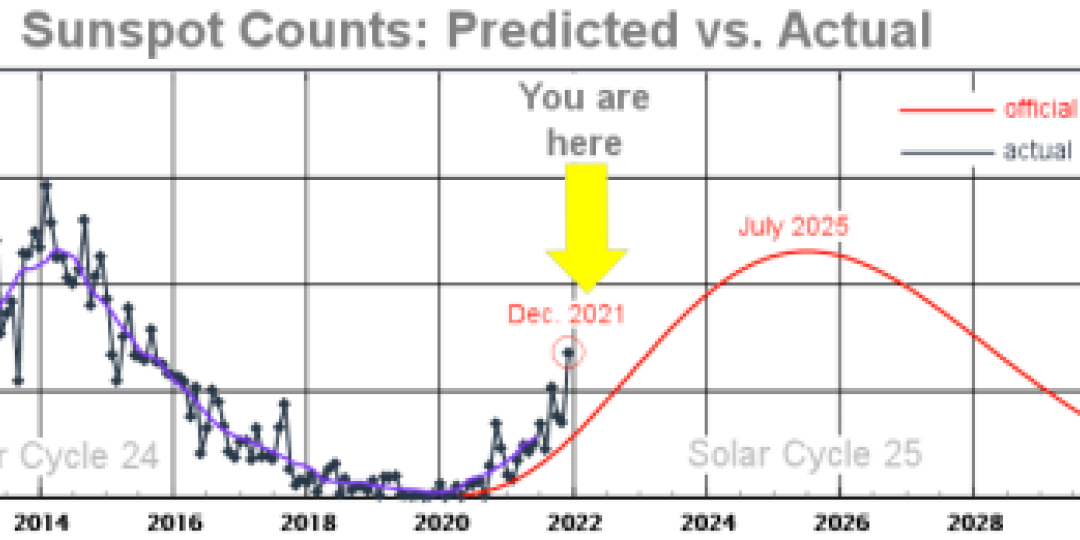Actual sunspot counts have now exceeded predictions for 15 straight months. The monthly value at the end of December 2021 was more than twice the forecast, and the highest in more than 5 years.
The “official forecast” comes from the Solar Cycle Prediction Panel representing NOAA, NASA and International Space Environmental Services (ISES). Using a variety of leading indicators, the Panel predicted that Solar Cycle 25 would peak in July 2025 as a relatively weak cycle, similar in magnitude to its predecessor Solar Cycle 24. Instead, Solar Cycle 25 is shaping up to be stronger.
Sky watchers have already noticed the change. “We are definitely seeing the effects on the ground in the Arctic!” reports Chad Blakley of the Swedish tour guide service Lights over Lapland. “Auroras now are the best in years.”
Indeed, geomagnetic activity has nearly tripled since the new solar cycle began. In 2020, the first full year of Solar Cycle 25, there were 9 days with at least minor (G1-class) geomagnetic storms. That number skyrocketed to 25 days in 2021. One of those “storm days” (Nov. 4, 2021) was a borderline G4-class (severe) event with auroras sighted as far south as California and New Mexico. A similar progression may be expected in 2022.
Another sign of increasing solar activity is the X-flare. X-flares are the most powerful type of solar flare. They can cause strong radio blackouts, pepper Earth’s atmosphere with energetic particles, and herald intense geomagnetic storms. The sun produced zero of these flares from late 2017 until mid-2021. Solar Cycle 25 busted the drought on July 3, 2021, with an X1.6 category explosion, followed by an X1-flare on Oct. 28, 2021.
Two down, 98 to go?
Typical 11-year solar cycles produce more than 100 X-flares during the years around Solar Max.















